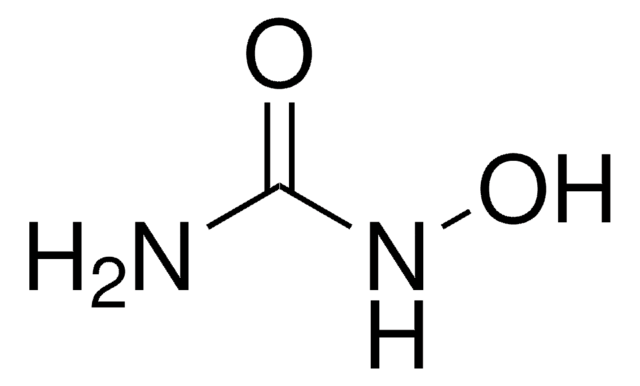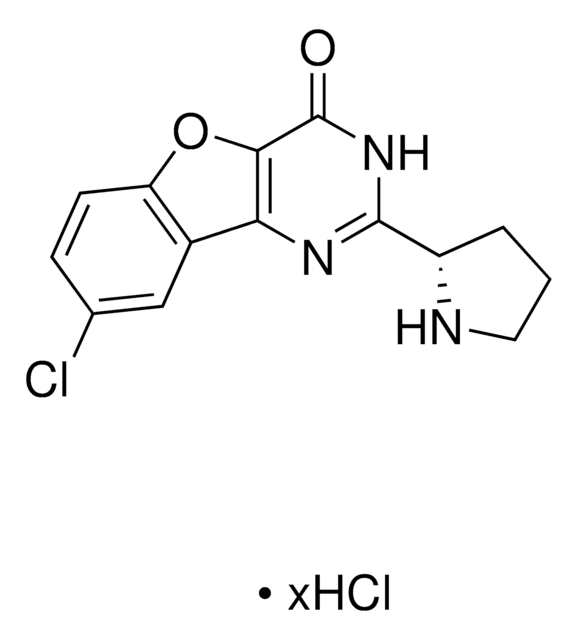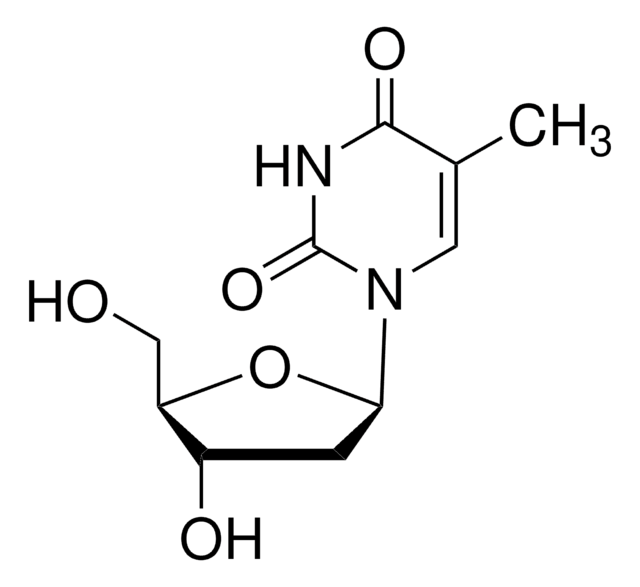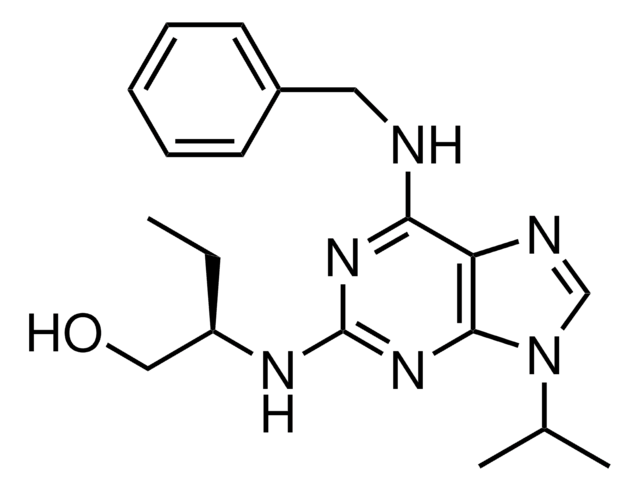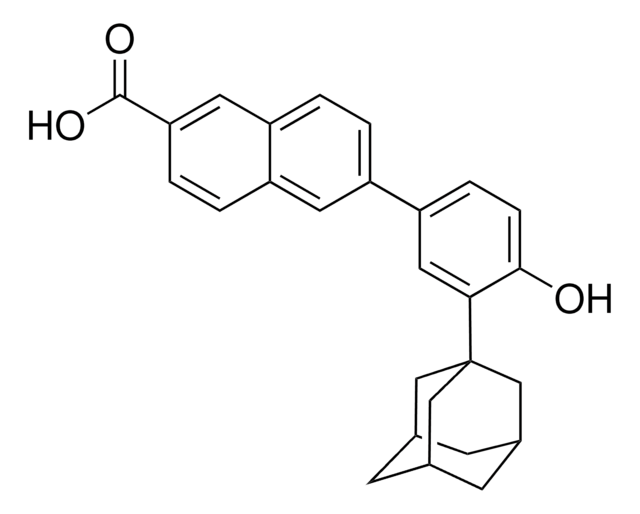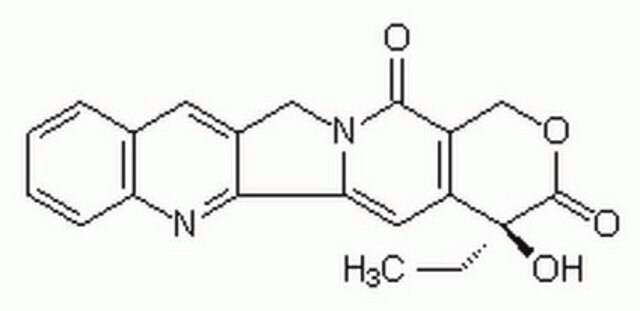A0781
Aphidicolin from Nigrospora sphaerica
≥98% (HPLC), powder
Synonym(s):
APC
About This Item
Recommended Products
Quality Level
Assay
≥98% (HPLC)
form
powder
optical activity
[α]27/D +12°, c = 1 in methanol(lit.)
color
white
mp
227-233 °C (lit.)
solubility
ethanol: 1 mg/mL (stable at least a week at 4°C.)
DMSO: 10 mg/mL (stable at least six weeks at −20°C.)
methanol: 10 mg/mL
H2O: insoluble
antibiotic activity spectrum
neoplastics
viruses
Mode of action
DNA synthesis | interferes
storage temp.
2-8°C
SMILES string
[H][C@@]12CC[C@@]3([H])[C@](C)(CO)[C@H](O)CC[C@]3(C)[C@]14CC[C@](O)(CO)[C@]([H])(C2)C4
InChI
1S/C20H34O4/c1-17(11-21)15-4-3-13-9-14-10-19(13,7-8-20(14,24)12-22)18(15,2)6-5-16(17)23/h13-16,21-24H,3-12H2,1-2H3/t13-,14+,15-,16+,17-,18-,19-,20-/m0/s1
InChI key
NOFOAYPPHIUXJR-APNQCZIXSA-N
Gene Information
human ... POLA1(5422) , POLD1(5424) , POLG(5428)
Looking for similar products? Visit Product Comparison Guide
Biochem/physiol Actions
Features and Benefits
Caution
Storage Class Code
11 - Combustible Solids
WGK
WGK 3
Flash Point(F)
Not applicable
Flash Point(C)
Not applicable
Personal Protective Equipment
Certificates of Analysis (COA)
Search for Certificates of Analysis (COA) by entering the products Lot/Batch Number. Lot and Batch Numbers can be found on a product’s label following the words ‘Lot’ or ‘Batch’.
Already Own This Product?
Find documentation for the products that you have recently purchased in the Document Library.
Customers Also Viewed
Related Content
n proliferating cells, the cell cycle consists of four phases. Gap 1 (G1) is the interval between mitosis and DNA replication that is characterized by cell growth. Replication of DNA occurs during the synthesis (S) phase, which is followed by a second gap phase (G2) during which growth and preparation for cell division occurs. Together, these three stages comprise the interphase phase of the cell cycle. Interphase is followed by the mitotic (M) phase.
Apoptosis, or programmed cell death (PCD), is a selective process for the removal of unnecessary, infected or transformed cells in various biological systems. As it plays a role in the homeostasis of multicellular organisms, apoptosis is tightly regulated through two principal pathways by a number of regulatory and effector molecules.
Our team of scientists has experience in all areas of research including Life Science, Material Science, Chemical Synthesis, Chromatography, Analytical and many others.
Contact Technical Service
